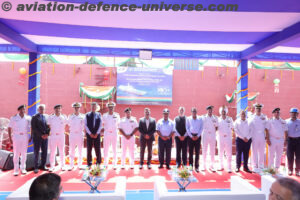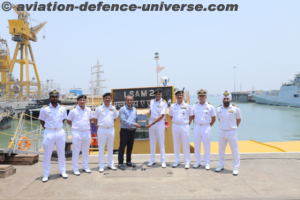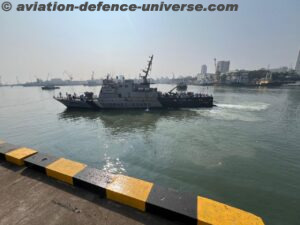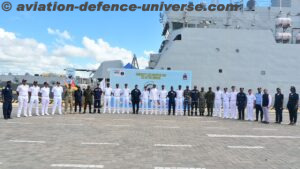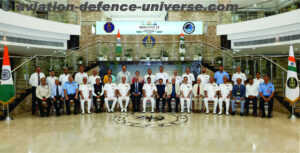New Delhi, 05 March 2018. The Indian Navy concluded a gruelling two-month long War Game on 28 Feb 18. The extensive War Games saw the participation of all the operational ships, submarines and aircraft of the Navy along with men and equipment of the Army, all types of aircraft of the Air Force and ships and aircraft of the Coast Guard. The War Games conducted on both the Seaboards of India extended from the Northern Arabian sea off the coast of Gujarat to the Southern Indian ocean off the Sunda Straits near Indonesia. The War Game on the Eastern seaboard was codenamed ENCORE (Eastern Naval Command Operational Readiness Exercise) and on the Western seaboard the codename was Exercise Paschim Lehar. The War Games were the first of the kind to be conducted on both seaboards indicative of the Navy’s threat perceptions of a two-front war.
The Chief of Naval Staff in Feb 17 had ordered a comprehensive review of the way the Navy exercised at sea. This review included both, peacetime operations as well as the training and preparations for war. The internal review undertaken by the Navy resulted in the ‘Mission-based Deployment’ concept which has been put into action since Jul 17. Mission-ready ships are now forward deployed in critical areas of the IOR with the inherent capability to respond to emerging threats and benign situations. The Navy has already reaped rich dividends from this Concept and large excerpts of this was also spoken about by Prime Minister Modi in his Mann ki Baat interactions.
In preparation for conflict, the Navy revamped it’s Operational Exercise plans to make them more contemporary and realistic. In a two-year cycle promulgated by Naval Headquarters, the Indian Navy has literally ‘cut the flab’ in the various exercises undertaken at sea. Greater focus has been accorded to conflict readiness across the spectrum as well as realistic scenarios likely to be faced at sea. The questions, ‘How does this affect the Nation’s security?’ and ‘How does it keep the common citizen safe?’, has been applied across all existing exercises and War games. The focus has been on realistic scenarios likely to manifest in the future including terrorist attacks from sea on critical infrastructure and populated areas, Defence of the Offshore oil resources of the country and protection of the large seaborne trade of India.
The Navy, with the realisation that future conflicts and contingencies are likely to invariably be Tri-service in their responses, ensured the participation of the other services with critical capabilities and specialised equipment to ensure a National response to situations. The War Games saw the Operational Commanders of the Navy and other services being put through crisis situations from benign Humanitarian Assistance and Disaster Relief to full-fledged conflict situations. The War Games will now be followed by extensive debriefings to identify key takeaways and formulate measures to further strengthen contingency plans.
While the nation went about their daily lives as if everything was normal, the dedicated Officers and men of the Armed Forces were exercising against threats from the sea that impinge upon the lives of the common citizen as well as their safe and peaceful future.






































